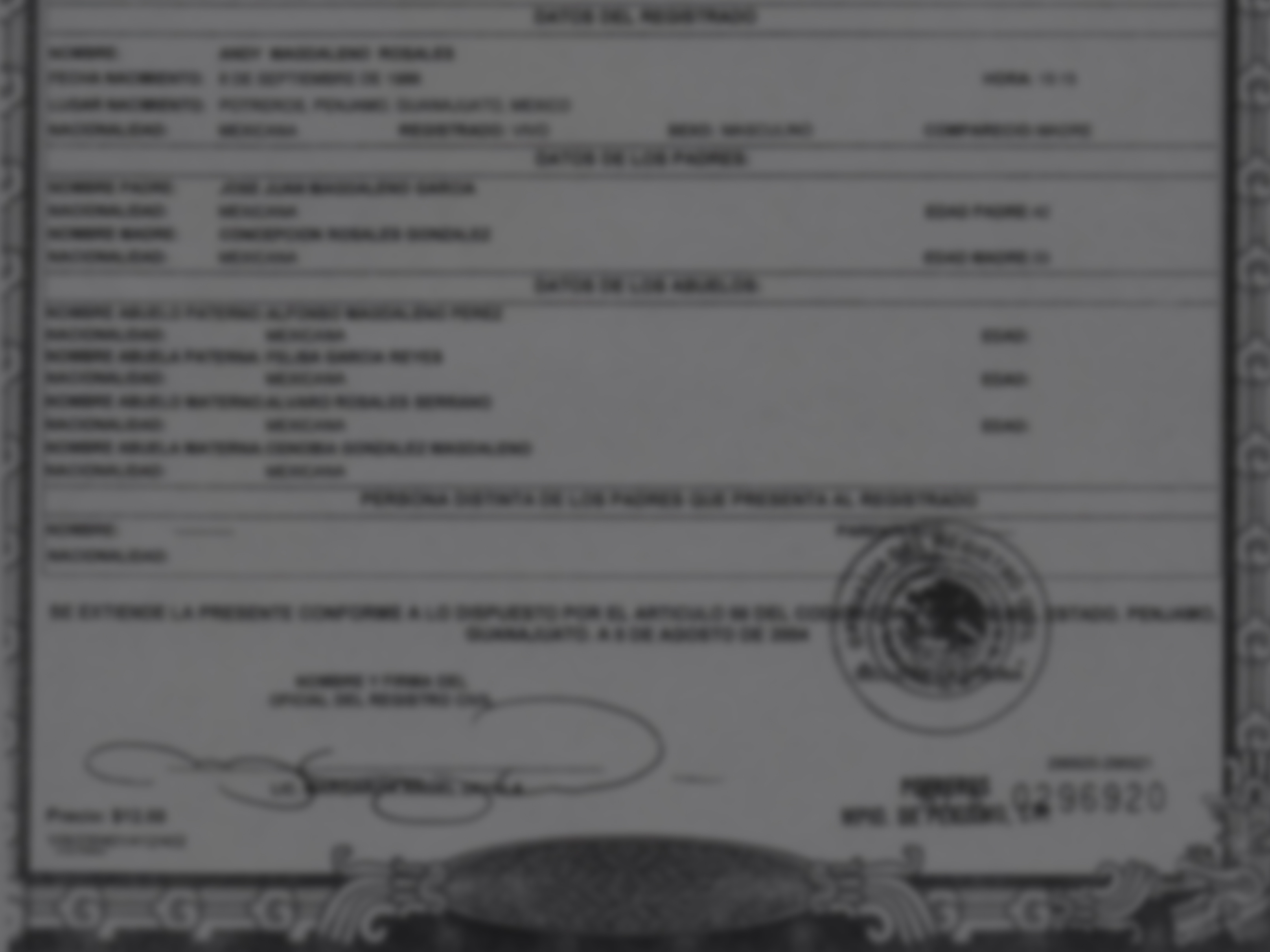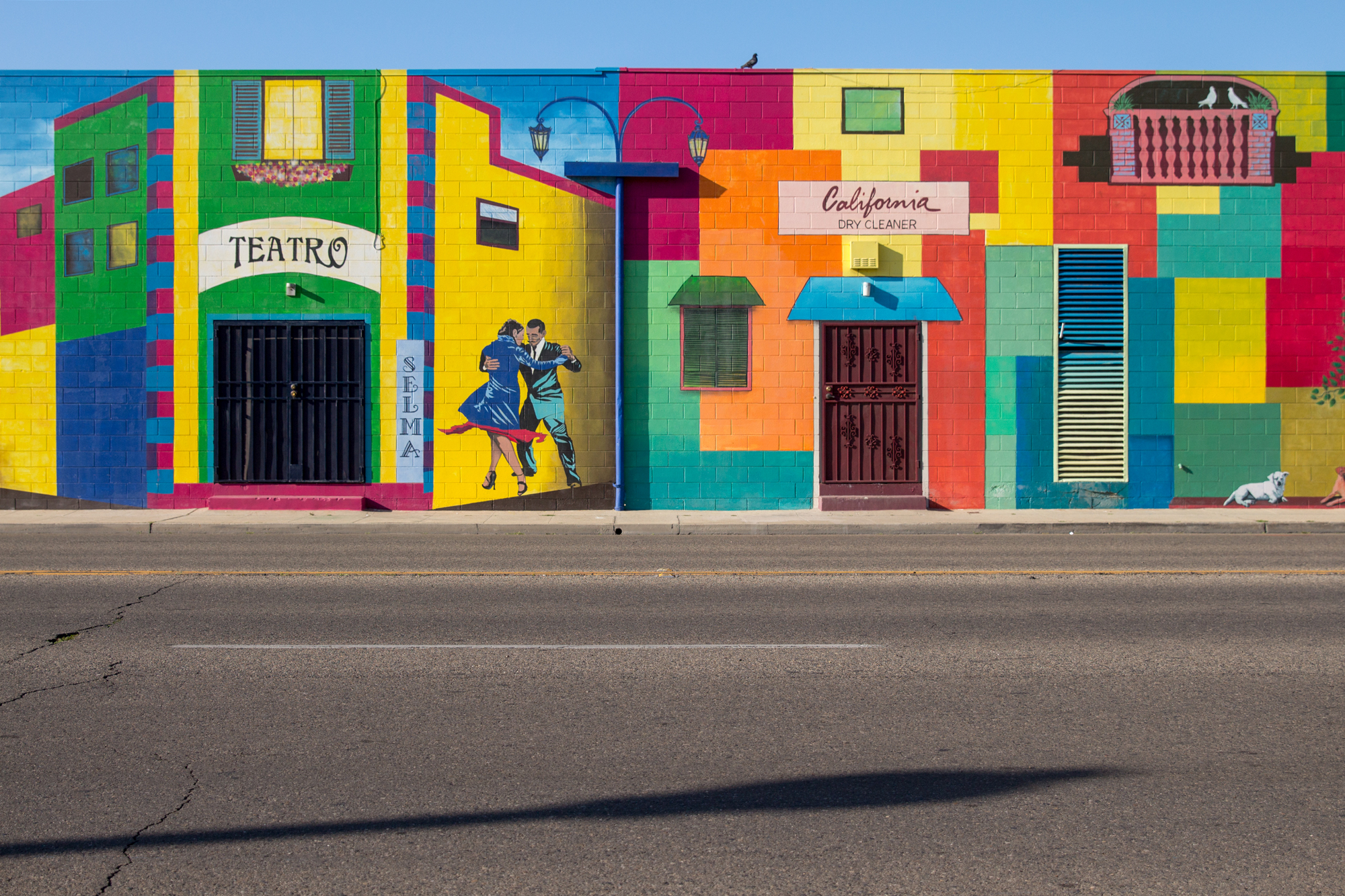By luck of the draw, Andy grew up undocumented while several siblings—including his older sister Beatriz—grew up as American citizens. Because of his status, his life took a drastically different path than hers.
In the agricultural towns of Fresno County where Andy grew up, mixed-status families are common. The situation can create inequalities within families that ripple out into the wider community.
This is the story of how Andy’s undocumented status shaped his life—and the lives of those around him.
Chapter One:
Birth

Andy would have been born in California, just like his older sister Beatriz, had it not been for an incident their parents had with a neighbor.
It was 1986. His parents, Juan and Concepcion, were undocumented and living in Anaheim, California, with six of their children, roughly ages one to 10.
Life was hard. When Juan wasn’t working, he would collect cans to supplement their earnings.
As Concepcion tells the story, a neighbor made a complaint because she believed the family wasn’t reporting the income from the cans. Then, someone they believed to be from a government agency came to the neighborhood to talk to them.
The family believed that their kids could be taken away and grew afraid.
Juan decided it would be best if Concepcion took the kids back to their small community in Guanajuato, Mexico.
“And he always said, ‘Ay, why wasn’t I born here, why wasn’t I born here?’ And I said, ‘My son, it wasn’t my fault.’”
- Concepcion, Andy's mother

Andy was born in Mexico in September of 1986. The family spent two years there before returning to the United States at the behest of their father.
Different members of the family came back in different ways.
The children who had been born in the United States crossed with their father’s cousin, presenting their birth certificates at the border.
Andy, on the other hand, crossed over the border illegally, carried by his mother.
They ended up in Selma, California—a small agricultural town in Fresno County known as the raisin capital of the world. That’s where Andy grew up until he was about 9 years old.



It’s difficult to pin down exactly how many families like Andy’s there are in Fresno County. But the USC Center for the Study of Immigrant Integration estimates that just over 10 percent, or roughly 94,500, of the county’s documented residents—both U.S. citizens and documented immigrants—live with at least one undocumented family member.* That’s a rate that mirrors the rest of California. This estimate does not account for family members who live in different households, so the actual number may be even higher.
Rhonda Ortiz, the center’s managing director, says mixed-status families are common not just in Fresno County, but throughout the United States. These families, she adds, run counter to the popular view of immigrants in the media and among non-immigrant Americans. “This image of the sole immigrant coming here and working is not the norm,” she says. “The norm is a family with a lot of different [documentation] situations.”
Jesus Martinez, chair of the Central Valley Immigrant Integration Collaborative, says he sees mixed-status families all the time in the DACA application workshops his coalition runs.
“Mixed-status families I think constitute the majority of immigrant families in this country—in this country, in this state and in this region as well. And that's due to a number of different factors,” he says.
Here’s how Martinez explains it. Migration flows to and from Mexico are more than 100 years old. Over time, however, immigration policy has changed, leaving different members of families with different legal statuses depending on when they arrived. Decades ago, many immigrants arrived as lawful permanent residents or with some form of visa or they were able to achieve legal status once they arrived. But in more recent decades, in the absence of comprehensive immigration reform, there have been fewer opportunities for undocumented immigrants to gain their legal status. Additionally, with the increased militarization of the border, seasonal workers who traditionally traveled back and forth between the two countries have been choosing to stay in the United States on a more permanent basis, living in the country without documentation for longer periods of time. In fact, a report from the USC center and San Diego State University indicates that undocumented immigrants in Fresno County have lived in the United States for an average of 10 years, according to 2008-2012 data. (The USC center’s data manager, Justin Scoggins, says the length of stay is likely to be longer now, considering research showing the rate of undocumented migration has decreased.)
*These estimates are from a USC analysis of 2016 5-year American Community Survey (ACS) microdata from IPUMS-USA. For a detailed description of the methodology used, see: http://dornsife.usc.edu/assets/sites/731/docs/CSII_Elig_Naturalize_Methodology_Final.pdf. The estimates apply the same methodology to updated ACS data covering the years 2012 through 2016.So what does this mean for families with undocumented parents?
“...within the family there's going to be this unequal access to institutions, to services, to education, to medical care, among other things.”
- Jesus Martinez, chair of the Central Valley Immigrant Integration Collaborative
Andy grew up before the Deferred Action for Childhood Arrivals program, or DACA, was enacted in June 2012. The program temporarily protects undocumented immigrants who were brought to the United States as children and meet certain eligibility requirements from deportation. DACA also provides them with work authorization. It does not, however, provide a pathway to legal status.
Mixed-status families like Andy’s came into the national limelight after President Trump rescinded the program in September 2017. UCLA’s Institute for Research on Labor and Employment found that DACA recipients “are overwhelmingly from mixed-status families,” with family members who have different legal statuses, including U.S. citizens and those who are fully undocumented.
Federal judges blocked attempts to end the program earlier this year, and U.S. Citizenship and Immigration Services has resumed accepting renewal applications. In late April, a federal judge ruled that the government must also begin accepting new applications, but stayed his decision for 90 days to give the Department of Homeland Security—which administers the program—the opportunity to "better explain its rescission decision." In August, that same judge ordered a full restoration of the program. But with promises of further legal battles ahead and no legislative solution in sight, the program’s ultimate fate—and the fate of its roughly 700,000 recipients and their families—remains uncertain.